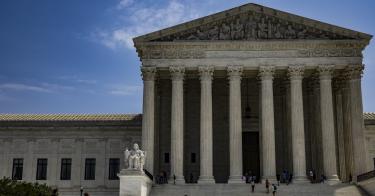The Presidential Commission on the Supreme Court has held its final public meeting and will now turn to producing a report for President Biden. The origin, creation and operation of the commission show that it may produce some sound and fury, but it will signify little or nothing.
The commission originated as a response to left-wing activists demanding that Congress and Mr. Biden pack the Supreme Court with additional justices likely to produce politically favorable decisions on certain issues. The idea of expanding the court to manipulate its decisions rather than to meet its needs has been around for a long time and has been soundly rejected more than once.
>>> Dems’ Confirmation Strategy Ignores Their Previous Complaints About Republicans
In 1801, outgoing President John Adams and his Federalists in Congress passed the Judiciary Act of 1801 creating lower court judgeships for Adams to fill and abolishing a Supreme Court seat that incoming President Thomas Jefferson might fill. When the new Congress restored that seat a year later, one of Jefferson’s allies suggested adding a few more but found no support for court-packing, even in his own party. Sen. John Ewing Colhoun of South Carolina, for example, asked: “Shall the Legislation with a strong arm, and by an assumed power, destroy [judges’] independence, and thereby their existence as one of the pillars of the Constitution?”
In 1937, fresh from a landslide reelection and with massive Democratic House and Senate majorities, President Franklin Roosevelt proposed adding up to six Supreme Court justices to overwhelm those who were voting to strike down his New Deal legislation. His own party rejected this takeover of the judicial branch. The Senate Judiciary Committee report concluded that the bill’s “ultimate effect would undermine the independence of the courts” and “expand political control over the judicial department.”
Court-packers are at it again today, pressuring Mr. Biden, first as a candidate and then as president, to support the idea. They had reason to expect resistance. As a senator, Mr. Biden called Roosevelt’s court-packing attempt a “terrible mistake” and a “bonehead idea.” As a presidential candidate, he said he was “not a fan of court-packing” because the Supreme Court would “lose any credibility.”
Yet days before the November 2020 election, he told “60 Minutes” that he would appoint a commission to examine reforming “the court system because it’s getting out of whack.” In April, he issued an executive order creating a massive commission with dozens of members. Oddly, he did not ask them to make any recommendations about anything.
This is very different from previous court reform commissions and from presidential commissions looking at a wide range of subjects. Each of them was assigned a concrete problem or issue to examine and was charged with making recommendations to solve or address that issue. Mr. Biden did neither of these in establishing the Supreme Court commission. Instead, the commission‘s report will merely describe or review the historical and contemporary debate about court reform and individual reform proposals. In other words, without having made any diagnosis, the commission will discuss prescriptions but will not propose any.
>>> Court Reform Commissions, Past and Present
This is weak tea, compared to what the court-packers had hoped for. It’s no wonder that one court-packing advocacy group, Take Back the Court, lamented that the commission was “doomed from the start.”
Still, court-packing dominated the commission‘s meeting on July 20. John Malcolm, director of the Heritage Foundation’s Meese Center for Legal and Judicial Studies, told the commission that “there is no crisis that needs to be addressed.” He warned that talk of reform “without first identifying the defects that must be remedied” could end up fostering “doubt and dissatisfaction with the courts, furthering eroding the public’s confidence in the courts.”
That danger will remain unless the commission takes the opportunity to affirm that the judiciary’s independence is more important than the outcome of any particular case or election.
This piece originally appeared in The Washington Times




